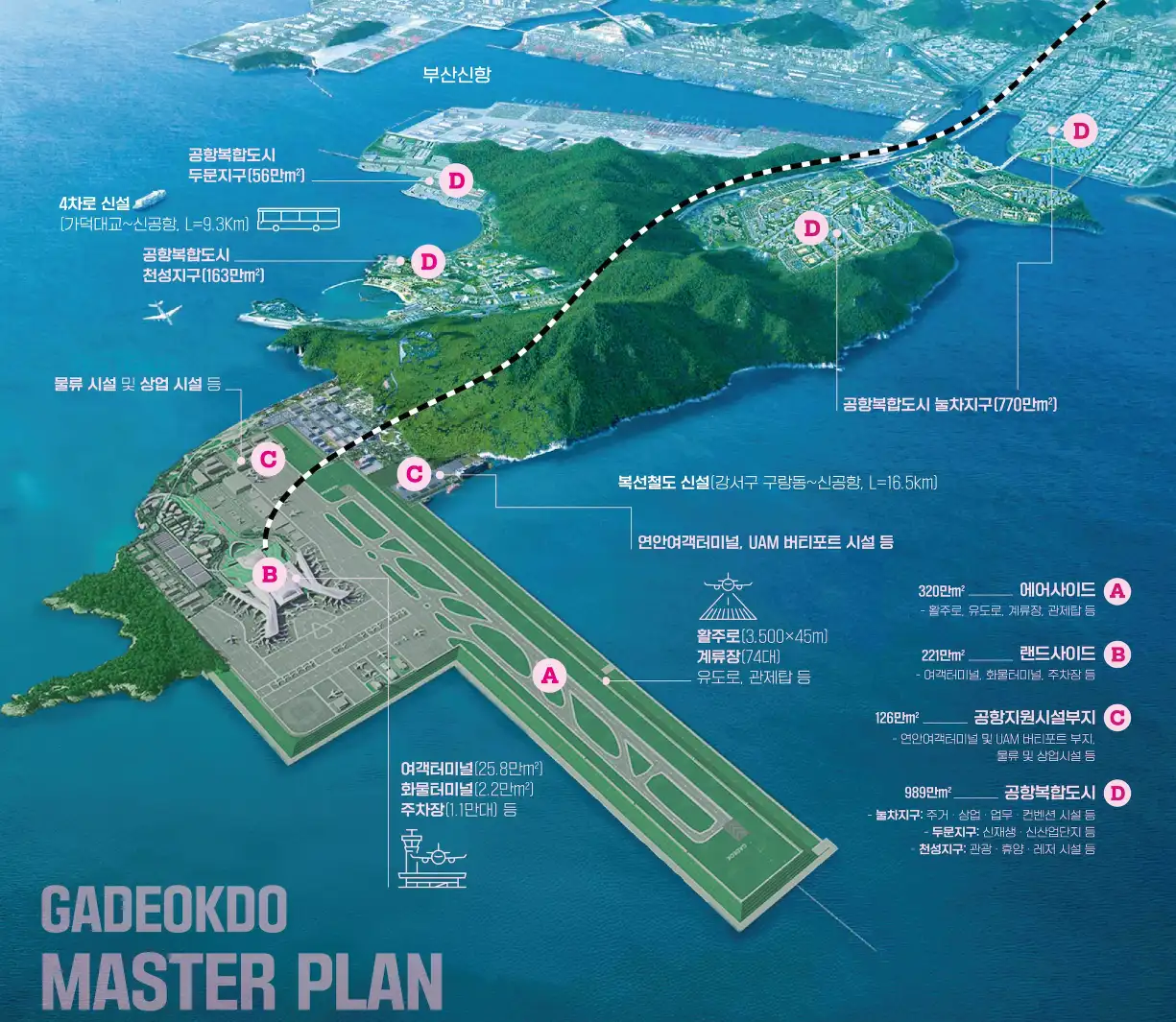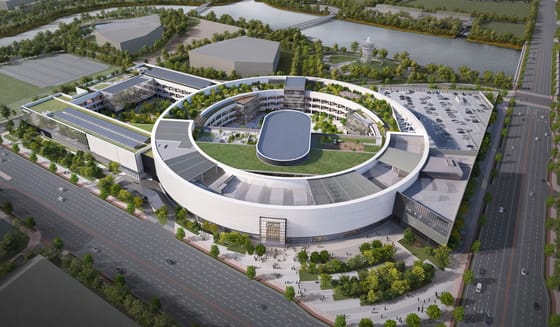Gadeokdo Airport’s 2029 Deadline in Jeopardy as Hyundai E&C Walks Out
Gadeokdo New Airport faces major delays, as the 2029 opening target becomes unrealistic after Hyundai’s withdrawal. The project’s structure and timeline need urgent review.

Busan, South Korea — South Korea’s Gadeokdo New Airport project has reached a paradoxical turning point. On June 5, the city of Busan will begin land compensation talks with residents affected by the project, signaling official progress on paper. But on the ground, there is no longer a construction company in place to build the airport. Hyundai Engineering & Construction, the sole bidder and preferred contractor, formally withdrew from the project on May 30, citing the government’s compressed construction timeline as technically unfeasible and potentially unsafe. As the government maintains a politically significant 2029 opening date, the airport's future now hangs in a widening gap between administrative momentum and engineering reality.
Hyundai Engineering & Construction’s withdrawal from the Gadeokdo New Airport project was not abrupt. Since being selected as the preferred contractor in late 2024, the company had repeatedly warned that the government’s proposed 84-month construction schedule was incompatible with the site’s physical conditions. The planned airport involves extensive marine reclamation, large-scale earth excavation, and ground stabilization over soft, compressible soil — all of which typically require prolonged settlement periods to ensure structural integrity.
According to industry norms for similar coastal airport developments, these steps alone can stretch timelines to 9 years or more. Hyundai had requested at least 108 months to complete the project safely. The government, however, held firm to its target of opening the airport by December 2029, a date that aligns with the end of the current administration’s term. With no compromise reached, the deal collapsed on May 30.
This outcome clearly reveals a significant conflict in large-scale infrastructure projects, where politically driven deadlines frequently surpass engineering realities. While symbolic milestones—such as groundbreakings or inaugural flights—hold political importance, they often fail to align with the practicalities of construction, especially at complex sites like Gadeokdo. It is essential to prioritize engineering feasibility over political expediency to ensure project success.
Beyond scheduling disputes, the collapse of the Gadeokdo airport contract reveals deeper issues with the project’s structural design — not of the airport itself, but of how it was commissioned. The South Korean government opted for a turnkey procurement model, packaging the entire project — from detailed design to final construction — into a single contract awarded to a single private consortium. The approach, commonly used in industrial or standardized developments, is far riskier in large, custom-built infrastructure projects, particularly those with unique site constraints like Gadeokdo.
Making matters more complicated, the project was issued as a single construction package, meaning one consortium would bear all technical, financial, and timeline risks. The result was predictable: four rounds of bidding in 2023 failed as major construction firms declined to participate. Only Hyundai Engineering & Construction submitted a bid during a subsequent negotiated process, effectively by default — not through robust competition.
Turnkey models are often criticized for concentrating too much risk on a single contractor while reducing the client’s direct oversight over design quality. In Gadeokdo’s case, the combination of a compressed timeline, complex marine engineering, and single-package responsibility created an unattractive and ultimately unworkable contract for the industry. By the time Hyundai exited, it was clear that the procurement structure itself needed to be reconsidered.
The difficulties facing the Gadeokdo New Airport project are not unique. Coastal airports built on reclaimed land — with similar engineering and environmental challenges — have been developed around the world. What sets those projects apart, however, is not just technical prowess, but how they were planned, phased, and procured.
Incheon International Airport, South Korea’s own flagship hub, offers a sharp contrast. Its first phase, completed in 2001, was executed under a public-led model. The government established Incheon International Airport Corporation (IIAC), a dedicated public agency that coordinated design, staged construction, and multi-package contracting over several years. Unlike Gadeokdo, Incheon was built in modular phases and with broad control retained by the state.
Similarly, Japan’s Kansai International Airport, which also sits on reclaimed offshore land, employed a multi-phase development model. Construction contracts were split among different firms by zone and specialty, reducing concentration risk. A public authority retained overall project management and was able to adjust scope and timeline as settlement issues emerged during and after construction.
Singapore’s Changi Airport expansions — including Terminal 4 and the in-progress Terminal 5 — are structured under design-bid-build models, in which the government oversees design and tenders out construction separately. This allows public authorities to maintain control over safety standards, cost, and sequence, especially for geotechnically sensitive areas.
These cases share common traits: split procurement, phased timelines, and public-sector control over critical decisions. By contrast, Gadeokdo’s one-shot, turnkey approach offered little flexibility — and left the entire project exposed when the sole contractor walked away.
What Needs to Change
The collapse of the Gadeokdo airport contract was not merely the result of a failed negotiation — it exposed structural flaws in how the project was conceived and commissioned. Without significant adjustments, the project risks further delays, cost escalation, and deepening public mistrust.
The first step is to abandon the single-package, turnkey delivery model. Complex, multi-year infrastructure projects — particularly those involving marine reclamation and geotechnical risk — are rarely suited to all-in-one contracts. Instead, the project should be divided into multiple work packages, such as site preparation, runway construction, terminal development, and support infrastructure. This allows for specialized bidding, risk diversification, and parallel workflows that can accelerate delivery without compromising safety.
Second, the government should adopt a design-bid-build procurement method or its hybrid variants. Under this model, the public sector maintains authority over the master plan and design specifications, and then invites bids for each phase or component. This structure enables clearer quality control, enhances transparency, and ensures that public objectives — including safety, long-term operability, and environmental mitigation — are not subordinated to cost-cutting pressures.
Third, oversight and management should be consolidated under a dedicated public agency or project corporation, modeled after entities like Incheon International Airport Corporation. Such a body can coordinate timelines, integrate stakeholder concerns, and maintain continuity across election cycles — something critically lacking in the current structure, where deadlines are tied to political terms.
Finally, the 2029 opening date must be reassessed. While politically symbolic, the deadline has proven to be the central constraint warping every other decision. Infrastructure built under artificial timelines is more likely to suffer from engineering compromise, budget overruns, and reputational damage. A revised schedule, based on realistic construction cycles and contractor capacity, would offer a more credible path forward.



Comments ()